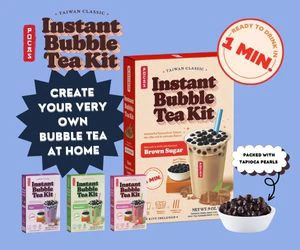Today, more and more stores and supermarkets offer products known as superfoods, to which people attribute almost miraculous properties.
They are said to be able to prevent and cure chronic diseases such as cancer, diabetes, Parkinson’s disease, arthritis, heart disease, and respiratory difficulties, among other health problems.
Consumers incorporate them into their shopping baskets, convinced they will help them stay healthy and energetic.
But what are superfoods, and do they have a preventive and curative capacity?
Indeed, they are nutrient-dense foods that provide a wealth of vitamins, minerals, and antioxidants.
They do not contain many calories and are nutritionally beneficial.
Among them are mainly those of vegetable origin, such as green leafy vegetables, beans, seeds, and certain fruits. We can add some dairy products and fish, such as salmon, to the list.
However, the term “superfood” is not scientifically recognized because there is no evidence to confirm that they have special powers.
The Superfood Trend
Although the so-called superfoods have existed all our lives, it is clear that they have become fashionable in recent years.
Eggplants, broccoli, chia seeds, ginger, quinoa, soybeans, potatoes, kale, and blueberries are some of the most sought-after products.
For some specialists, this trend results from a marketing strategy promoted by the food industry to increase sales.
For this reason, they remind us that buying exotic and expensive foodstuffs is unnecessary.
Above all, because there are cheaper ones on the market with the same properties. But opinions are divided.
According to a study by Global Data, this phenomenon is because of a genuine health concern.
According to the firm, 42% of consumers worldwide are taking proactive attitudes towards physical and mental well-being.
Following the COVID-19 pandemic, many people began changing their consumption habits to strengthen their immune systems.
For the retail sector, this shows that supermarkets are not out to deceive consumers to make a profit.
Instead, these businesses are trying to promote changes that help their customers eat right and feel good.
Superfoods and a Balanced Diet
Nutritionists see nothing wrong with superfoods. However, they warn that no food alone can cure a disease or is the key to good health.
But it is true that if they are included in the dish they will bring some benefits.
In any case, following a diet containing all food groups in adequate portions is essential.
Sometimes, they say, the mistake is assuming that the benefits will be more significant by consuming a product in unlimited quantities.
Lack of moderation can lead to weight gain, elevated blood sugar, or other problems.
In addition, when processed to give them more flavor, some foods lose properties and become less healthy.
Demand for natural products
In the United States, adopting healthy lifestyles has boosted sales of superfoods. Users are buying, first and foremost, protein-rich products.
People also look for them with amino acids, minerals, vitamins, and almost no additives.
Vegetarians, the elderly, and pregnant women primarily seek foods that provide good energy sources.
According to Retail Insight, sales volume has grown thanks to the variety of retailers targeting this food market.
In 2019, total sales grew 13.25% across all channels, while average revenue per square foot was $610.17.
The market analysis company believes these figures are timely for Hispanic supermarkets. Why is that?
Beyond their “ethnic” sections, they could allocate space for the natural foods, low-sugar or gluten-free categories.
Or give free talks to educate customers and employees about the importance of healthy eating, with the sponsorship of suppliers.
Such a health-oriented business strategy generates several benefits: increased sales, customer satisfaction, and improved corporate identity.
It also favors product promotion and social responsibility.
Most popular superfoods
Many natural foods are called superfoods. Consumers often request them in supermarkets.
Here are some of the most popular ones and their properties:
- Blueberries. They have a high concentration of antioxidants. They provide fiber, vitamin C, and potassium. Their consumption is associated with a lower risk of cancer, infections, and inflammations.
- Sesame. These seeds are a source of calcium, iron, zinc, and vegetable protein. In addition, they contain lecithin, help with the digestive process, and reduce cholesterol.
- Quinoa. This pseudo-cereal has a biological value similar to animal protein. It has fewer carbohydrates than rice, is light, and aids digestion.
- Chia. These seeds are rich in omega-3 and 6 fatty acids and antioxidant substances that eliminate free radicals associated with degenerative diseases.
- Soybean. It is a legume containing essential amino acids, fiber, and vitamins. Some studies attribute it to a cardioprotective and renal function effect.
- Kale. This vegetable has a lot of calcium, iron, and minerals and few calories. It is suitable for strengthening bones and digestive health; some believe it helps prevent cancer.
- Ginger. It is a medicinal plant because it decongests airways and stimulates the defenses. Ginger is used to reduce or prevent nausea, vomiting, and dizziness.
Related Article: Cook “trendy” and live “healthy”
These are not the only foods that people use daily. There are many more that consumers bring to the table to promote good health.
Whether they are part of a commercial strategy or not, the fact is that superfoods have significant nutritional value.
But, as with other food products, they sometimes affect everyone differently.


